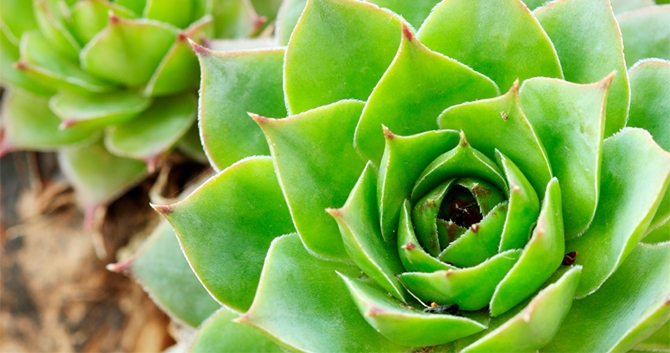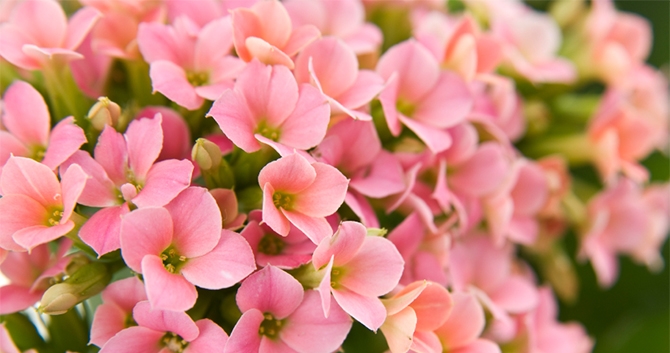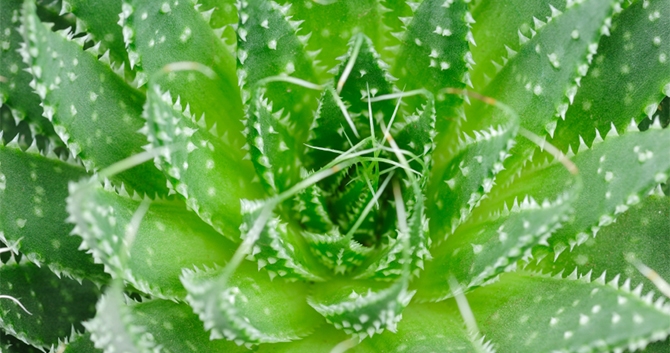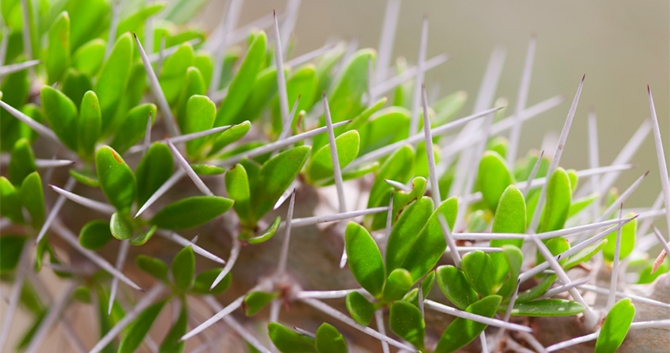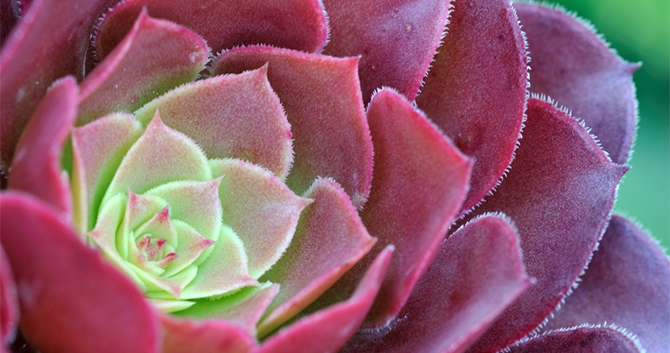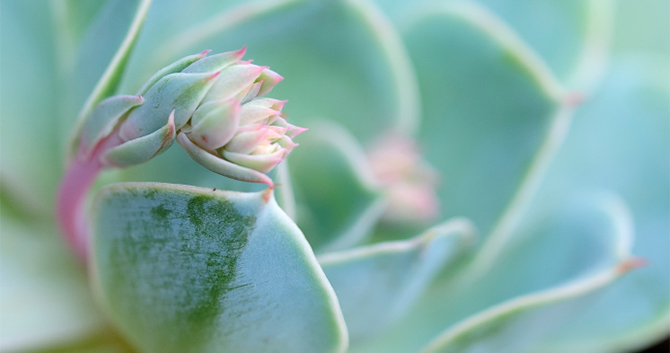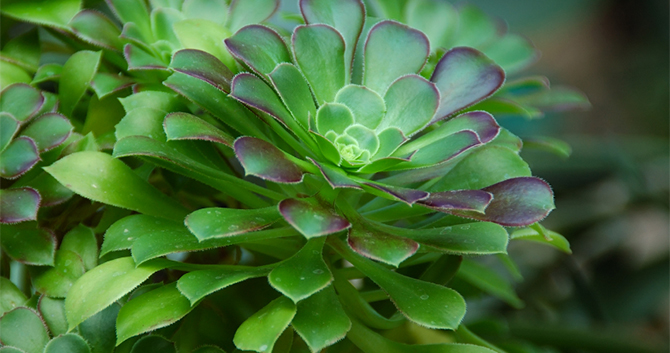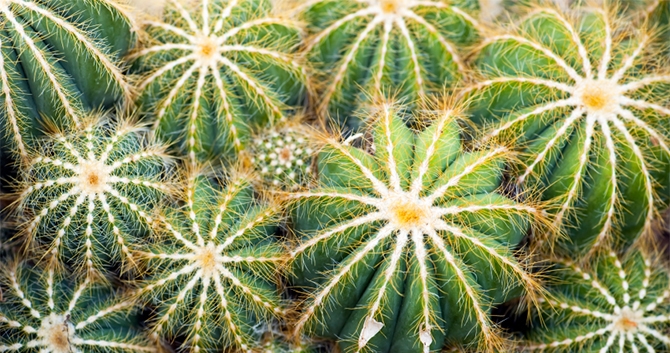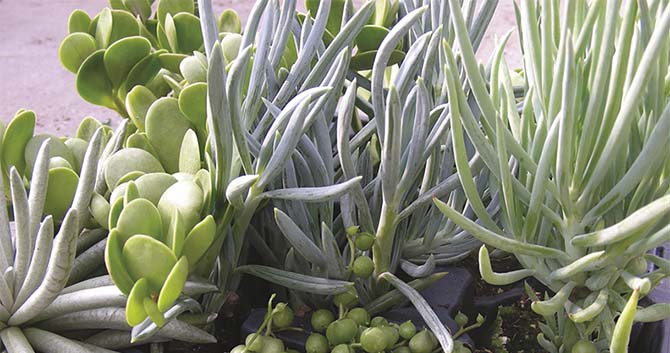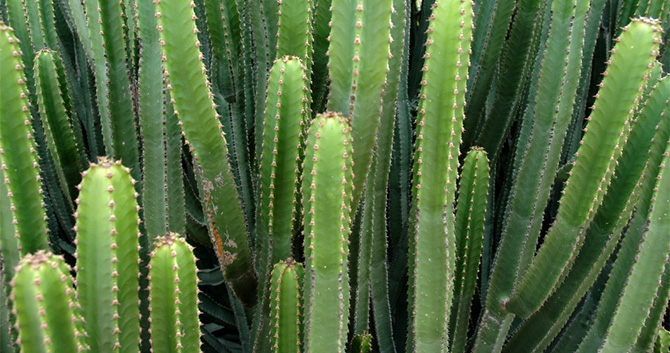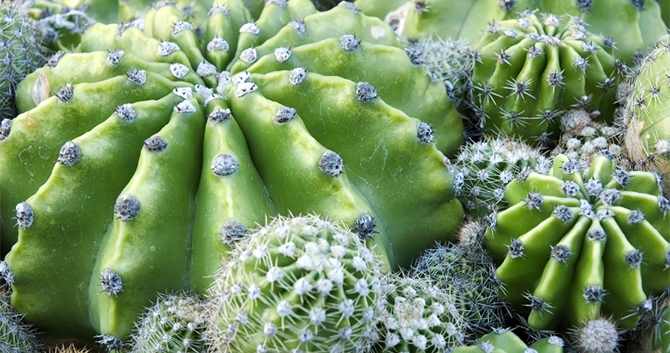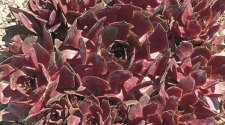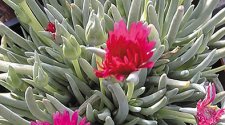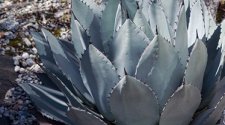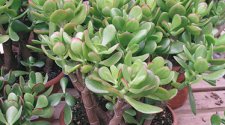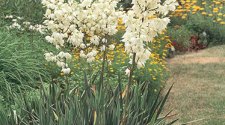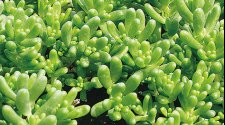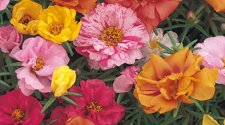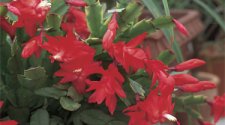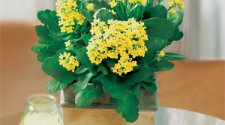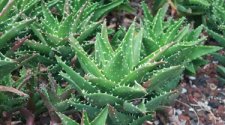In a word, succulents are irresistible. In subtle shades of green, blue, grey, taupe, and magenta, they create a quiet, restrained beauty in rock gardens, borders, containers, and dish gardens.
They’re among the easiest plants to grow, thriving on neglect and happily calling rocky soils, small crevices, crowded spaces, and drought conditions “Home Sweet Home”. They’re also among the most popular indoor plants, thriving in bright light and dry air.
Succulents are found almost anywhere water is scarce. The oldest succulents are believed to date back over 25 million years, while others appeared more recently, at a mere 5 million years ago. There are approximately 10,000 species of succulents that have adapted to all sorts of inhospitable growing conditions in scorching deserts, snow blanketed mountains, rainforest canopies, and rocky cliffs.
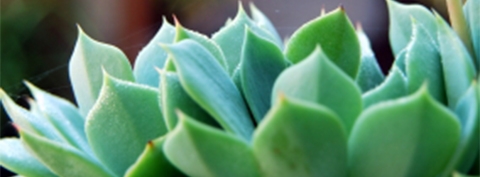 Echeveria has magnificent clusters of rosette leaves
Echeveria has magnificent clusters of rosette leaves
Their survival strategies make succulents some of the most interesting plants to add to your garden. Some wait for the rainy season, morning mist, or periodic fog to collect moisture, others reach deep into the soil to find a drink. Succulents use their leaves, stems, and roots as personal canteens to store scarce water, resulting in thick, plump leaves unlike most other plants.
Succulents minimize evaporation by reducing their surface area, growing in all shapes and sizes from tiny living pebbles and strings of pearls to intricate rosettes, tall linear columns, sleek blades, round globes, and everything in between. Many have no leaves at all!
To prevent water loss, some cover exposed areas with a waxy powdery coating called 'bloom' or 'pruinose', others have soft hairs or stomas below the surface. Many succulents also have prickles or thorns to protect their precious water supply from predators looking to capitalize on their reserves.
Types of Succulents
In general, succulents can be divided into four categories, depending on their strategy for storing water – leaf, stem, root, and caudiciform. Each category has a distinctly different appearance, with the parts that store water the most prominent parts of the plant.
Leaf succulents store water in thick, fleshy, leaves that are typically covered with a waxy coating or fine hairs. Leaves are usually arranged in a rosette pattern, although there is no end to variety. Take Lithops and Conophytum for example; with only two small leaves visible above ground, these varieties resemble small green pebbles. Popular leaf succulents include Aloe, Crassulacea, Echeveria, Jovibarba, and Sempervivum.
Stem succulents use ribbed, grooved, or thorny stems to store precious moisture. Many have no leaves or can quickly shed their leaves in times of drought. To reduce evaporation, stems are often covered with a waxy coating or fine hairs. Popular stem succulents include cactus, Euphorbia, and Stapelia.
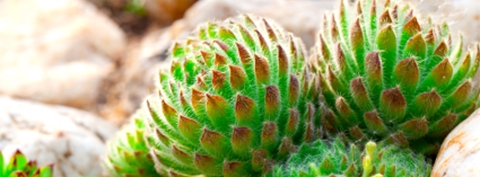 Sempervivum, is a favorite for container, trough, and rock gardens
Sempervivum, is a favorite for container, trough, and rock gardens
Root succulents store water at the soil level in their roots. This group includes Caulipsolon, Ebracteola, Ectotripis, and Nanateus.
Caudiciform succulents store water at the soil level in either their stems or roots. Popular Caudiciform succulents include Adansonia, Adenium, Cyphostemma, and Pachypodium.
Getting Started
Succulents are among the most versatile plants indoors or out. They make great houseplants, fabulous container plants, and perfect companion plants for garden beds and borders.
Succulent gardens rely on contrasting textures, colors, shapes, and scale to create interest. When choosing succulents, feel free to mix and match sizes, shapes, and colors to create a collection that appeals to you. Group succulents that like similar light, heat, and water conditions so they grow well together. Most don’t mind crowded conditions so fill up those cracks and crevices with full abandon.
A few simple tips will help you successfully design your own succulent collection:
- Create a focal point to anchor your composition. Look for dramatic succulents like a prickly barrel cactus, large Agave, or tall columnar cactus.
- Vary the heights of your plants to create a dynamic look, mixing succulents that spill over the side with medium and tall varieties. Create mounds and ridges to elevate succulents, making them more prominent.
- Add contrast with different colors, textures, shapes and sizes. Combine small and large leaves, regular and irregular shapes, and complementary colors. Strongly linear succulents like Aloe pair perfectly with round or irregular shapes. Some great color combinations include green aloe and red kalanchoe or blue senecio and orange euphorbia.
- Repeat plants and groupings to create continuity throughout your design.
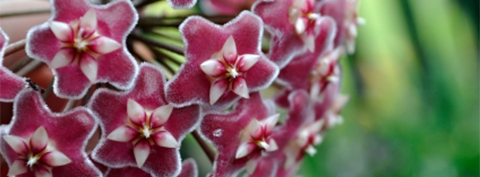 Hoya are evergreen succulents from Australia
Hoya are evergreen succulents from Australia
Consider a creating a rock garden for a natural setting to show off your succulents. Plant a variety of succulents in front, behind, or cascading over the rocks, using boulders to add scale and contrast.
Succulents are also ideal for smaller spaces like windowsills, balconies, and patios. There are lots of tiny succulents with intricate details that best appreciated up-close. Portability is an added plus, allowing you to move containers indoors in colder climates to keep them looking good all year long.
Planting Tips
Whether planting succulents in containers, rock gardens, or garden beds, having your own succulent garden is as simple as 1-2-3! First, plan your space. Second, plant your succulents. Third, enjoy your garden. It’s that simple....
Although they’re easy to grow, succulents are adapted to low moisture conditions and need proper drainage, a suitable climate, and thoughtful watering to thrive. A little preparation will help them to have a long and happy life:
- Planting: Be sure to select a sunny spot that has good drainage, without standing water. Ideally, plant your succulents on mounds to further promote drainage. Mix heavy soils with crushed pumice or decomposed granite at a about a fifty/fifty mix. In containers, add perlite or pumice to regular potting soil to avoid root rot.
- Water: Although succulents are low-water plants they should not be confused with no-water plants. Water regularly after letting the soil nearly dry out between watering. When dormant (usually the winter months) keep your succulents on the dry side, watering only about once a month.
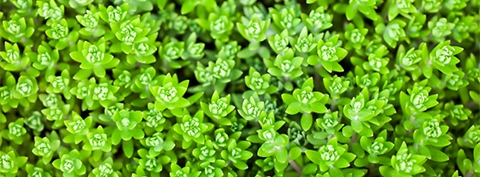 Sedum is ideal for tucking into crevices
Sedum is ideal for tucking into crevices
When starting your project, remember that you don’t have to plant everything all at once. Start with a few succulents, see how they do, and add to your design over time.
Also keep in mind your climate conditions and select plants that work best in your area. Are you planting in an area that has cold winters? If so, plant tender succulents in containers so you can move them indoors when the temperature drops or look for hardy alpine succulents that have what it takes to weather the cold. Our favorites are listed here, but try your hand at any that you find appealing!
Tender Succulents
- If you’re lucky enough to live in a warm climate, your succulent choices are endless! Tender succulents are perfectly adapted to bright light, heat, and drought, but can't withstand even the slightest frost. If you live in a cool climate, don’t despair, these plants also make ideal houseplants. There are thousands of varieties to choose from, but some of the most popular tender succulents include:
- Aeonium: These succulents are among the most ornamental, with decorative clusters of leaves in deep mauve, green, or grey that look like large showy flowers. Native to the Canary Islands and central Africa, Aeonium like bright full sun and are moderately drought, heat, and frost tolerant. They’re ideal for containers, with shallow roots that require very little soil. They die after flowering and need to be replaced but are well worth including in any display.
- Aloe: Native to the Middle East and North Africa, there are over 450 species of Aloe. One of the most well-known of the group is Aloe Vera, popular for it spiked stems that produce a soothing gel used for centuries to treat burns.
- Agavaceae: Among the 300 varieties in this family, Agave is one of the most well-known. Native to the temperate regions of Central and North America, these large succulents will add a sense of drama to any garden.
- Alzoaceae: This group of succulents makes great a groundcover, forming carpets of living, flowering stones. Native to Africa, Australia, and the Central Pacific they tolerate both drought and heat. Among the most popular varieties is the ice plant, with white, yellow and pink flowers and small fibers that sparkle like crystals in the sunlight.
- Cactus (Cactaceae): There are over 1,600 species of cactus, ranging from tiny dwarves to towering giants. Cactus mainly store water in their stems which are often covered in a thick leathery skin, a waxy coating, and protective thorns. Stems are often ribbed, allowing them to shrink or expand with the amount of water stored. Many cacti also have beautiful bright blooms.
- Crassulacea: This family has over 1,300 species, the most popular of which is the Jade plant. Known as the friendship tree, Jade plants have beautiful pink flowers that float above plump green leaves. This hardy houseplant can go for weeks without water.
- Euphorbia: Native to Madagascar this diverse group of plants includes both succulents and non-succulents. The succulent Euphorbia varieties evoke an underwater landscape, resembling vibrant green coral fans and anemones.
- Gasteria: A close relative of the Aloe, Gasteria offers the added bonus of having pretty orange and yellow flowers clustered along tall swaying stems. Its leaves can be striped or solid, ranging in color from dark green (almost black) to shades of muted greens and greys. Ideal for containers, Gasteria grows easily in light shade and well-drained, sandy soil.
- Ghost Plant (Graptopetalum paraguyense): This Mexican native is a great addition to containers and rock gardens, adding texture and dimension. Its stems are crowded with sea foam green leaves that can grow to 6 inches across.
- Howorthia: There are over 70 species of Howorthia, which are prized for their rosette shaped leaves. Howorthia grows in rocky soil and thrives in full sun, so if you’re looking for an easy-to-grow, hard-to-kill plant, this low-fuss houseplant is for you. Just set it on a windowsill that gets several hours of full sun daily and water it only when the soil is dry.
- Stapelia: These succulents are an acquired taste. They’re carefree and simple to grow, even if almost totally neglected. Similar in appearance to miniature cactus (minus the thorns), they produce a stunning flower that can reach 16 inches across. So what’s not to like? Turns out the flowers are designed to lure pollinators with the smell of decaying carrion! Unless you’re a beneficial insect, you may prefer to admire, then remove the flowers and appreciate the decorative greenery.
- Portulaca: There are 40-100 species in this family of tropical succulents. Decorative and easy to grow, this group includes colorful Moss Rose as well as a number of varieties of edible Portulaca (Portulaca oleracea) Also know as Common Purslane, all parts of Portulaca oleracea are edible -- stems, leaves, and flowers. They add a salty, citrus flavor and mushroom-like texture to salads or stir fries.
- Yucca: These are larger members of the Agave family, growing 2 to 3 feet tall and about 4 to 6 feet wide. Yucca is short-stemmed with long, narrow leaves and will flower from mid-summer to early fall. It’s a reliable perennial that thrives in deserts and drought conditions.
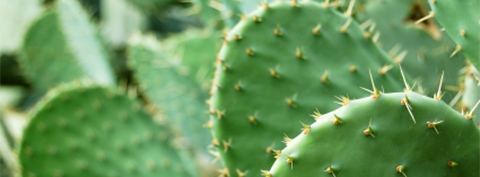 There are over 1,600 species of cactus
There are over 1,600 species of cactus
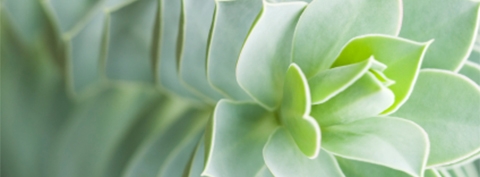 Euphorbia has many succulent varieties, like this Donkey Tail Spurge
Euphorbia has many succulent varieties, like this Donkey Tail Spurge
Hardy Succulents
Hardy succulents are found in northern climates where temperature extremes can range from bitter cold and deep snow to blazing summer sun. These succulents are resilient, reliable, and charming. Their flowers attract butterflies and other pollinators and their deep root systems hold soil in place, preventing erosion from rainfall or wind. These succulents do best with some cold winter weather for a dormant period.
Asclepiads: Native to Africa, these succulents have an entire Society devoted to them – the International Ascelpiad Society! Part of the milkweed family, they’re prized for their unusual and spectacular flowers.
Hens and Chicks: This is actually a group of three beautiful succulent varieties (Echeveria, Jovibarba, and Sempervivum) with magnificent clusters of rosette leaves and petite white, pink, or yellow flowers. Their whimsical name comes from the tiny offspring produced by the mother plant. Lightly attached on thin stems, these young succulents are easy to pop-off and replant to expand your garden.
Orostachys: This native to Siberia, Mongolia, and Asia adds amazing texture to any garden. Each of the 13 species in this family is both unique and rare. Some have intricate rings of clustered rosettes, while others form a cone of rosettes, earning them the nickname of ‘Dunce Cap’. Whichever the species, having orostachys in your garden is like a pot of gold at the end of a rainbow, both lucky and rare.
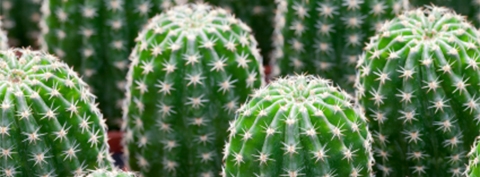 Succulents often have thorns to protect their precious water supply
Succulents often have thorns to protect their precious water supply
Rosularia: This is the perfect plant for troughs, stone retaining walls and pocket gardens, perfectly complementing taller plants. Although they’re slow growers, their rosettes live-on long after flowering and will bloom again.
Sazifraga: This alpine succulent is a favorite among experienced gardeners. Sazifrga creates a cushion of greenery accented with clusters of tiny pink flowers that add pops of colors where needed.
Sedum: This family of succulents includes varieties of several shapes and sized. Smaller varieties are ideal for tucking into crevices in walls, and rock gardens. while the larger varieties can create a low maintenance flowering border, without any pruning needed. Native varieties can be found in Northern Europe, China, Japan, and the Americas.
Companion Plants:
Succulents pair perfectly with other plants to add structure and texture to soft blooms and fragrant plants. When planting companion plants, especially in containers, be sure the larger or more aggressive varieties don’t choke out the succulents or leave them with too much shade. Choose choosing companion plants that highlight the unique features of your succulents. Some of our favorites include the following:

